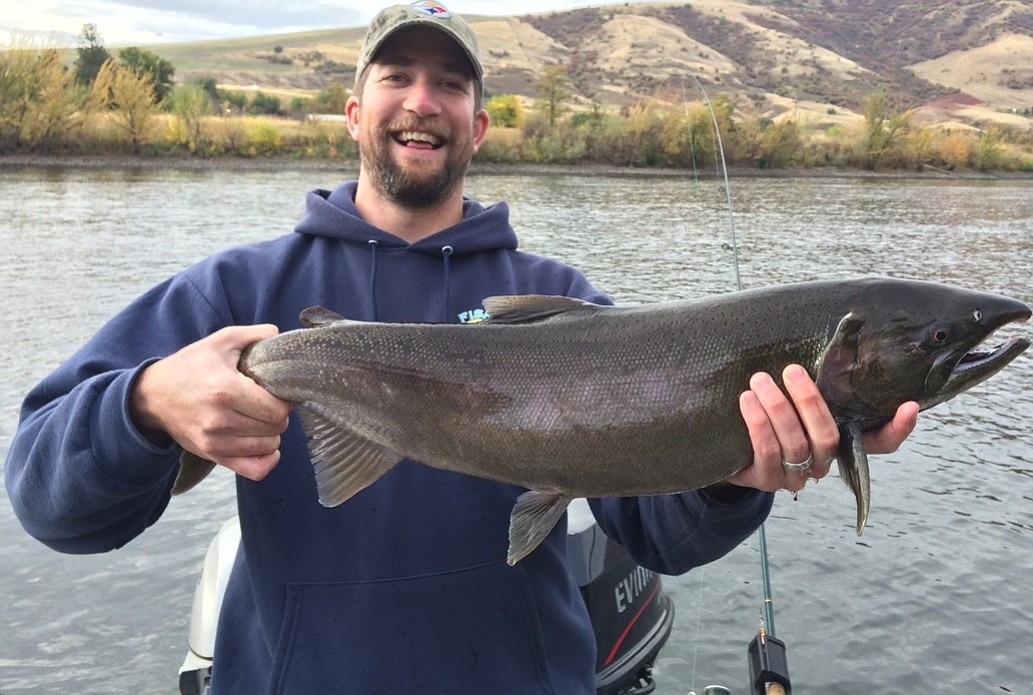Idaho’s first-ever season for sea-run coho salmon has spawned a new state record for the species, and perhaps a race to beat it.
The season opened Friday, and one enterprising angler, who was among the first to land a coho, realized the state record was there for the taking.
Ethan Crawford, a Washington Department of Fish and Wildlife biologist who lives in Moscow, landed a female coho Saturday that weighed 9.4 pounds and was just under 31 inches long. That easily beats the state’s current freshwater coho record of 6 pounds set by Ted Bowers of Cascade, who caught the fish from Cascade Reservoir in 1992.
Crawford had the fish, caught on a spinner, weighed on a certified scale, verified by an Idaho Department of Fish and Game employee, and then he filled out a record fish application. By all accounts, his fish is the largest ever documented to be harvested in a sport fishing season in Idaho.
“It’s kind of neat,” he said of holding the record. “It’s just cool we have this season and opportunity to catch coho.”
But his record might not last long.
“I can tell you that there are many more out there that are even bigger,” said Joe DuPont, regional fisheries manager for the Idaho Department of Fish and Game at Lewiston.
Last week, fisheries biologists at Dworshak National Fish Hatchery handled a 32-inch coho, and DuPont said coho in excess of 10 pounds have been documented in a sampling trap at Lower Granite Dam.
It’s possible someone has already caught a bigger coho but didn’t think of having it weighed before cleaning it.
“They are bonking them and eating them and not even thinking about it,” DuPont said. “They are so used to catching big fish in this water.”
The season was approved last week following the return of more than 15,000 coho — the result of the Nez Perce Tribe’s efforts to revive the run that was declared functionally extinct in 1985. Coho were once abundant in the Snake River basin, but it has been many decades since enough of them returned from the ocean to support harvest.
The run was all but wiped out by the Lewiston Dam, which was built in 1927 and removed 50 years later. But even before the dam blocked coho from reaching their spawning grounds, the run had been reduced by habitat degradation and overfishing.
The run was so imperiled that Idaho has never held a coho season, aside from fishing for coho planted in landlocked lakes. DuPont said it’s likely the department will make a change to its record book categories to recognize both sea-run coho and those that spend their lives in fresh water. The state makes the same distinction between sea-run chinook and chinook that are planted in places like Lake Coeur d’Alene.




